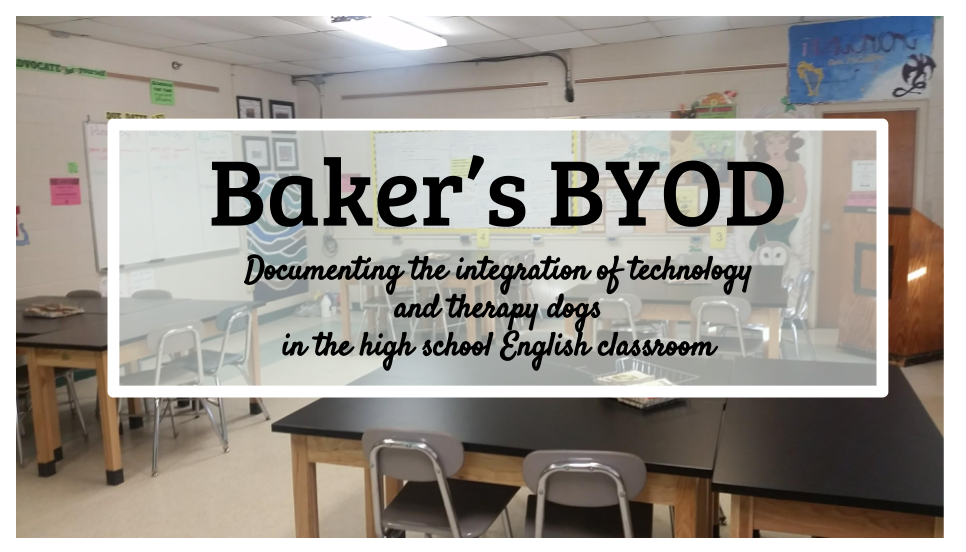The session prompted participants to examine the ways in which we offer choice to our students: the texts they read, the assignments they complete, scoring, grades, participation.... The list goes on to encompass all facets of our classroom activities and procedures.
Aptly named, this session forced me to reflect on the choices I provide for my students and how I can transform the decision making process. When I reflect on the choices I offered students during the first years of my career, I usually provided them with options that I would have wanted as a student, but here in lies the problem: I was providing the choices I wanted. I was not really walking in their shoes; I imagined myself as I WAS as a student. My intentions with providing choice were sincere, but who I am now is much different from the student I was 20 years ago, and who I was then is much different from who my students are today.
must change the mindset/culture! it is OK that the teacher is not the expert in the room. #cel13
— Kate Baker (@KtBkr4) November 24, 2013
In the past 2 years, attempting to offer my students choices that are not biased or preconceived, I offer a "Show Me" option instead of an assessment I design for unit tests. Students "show me" that they know the material by synthesizing their knowledge and skills into some kind of product. I want to see that they can be an expert in their own right. The students have complete choice to show me that they know the material, and I grade it using an OSU rubric (Outstanding, Satisfactory, Unsatisfactory). Instead of taking a test on the Trojan war, one of my students last year chose to write a multi-scene screenplay of the Apple of Discord episode. Amberlynn's writing was captivating and she showed me she knew the origins of the Trojan War without ever selecting A,B,C, or D on a multiple choice test. Amberlynn trusted herself to take a risk and try something new, and my supportive classroom environment enabled her to take that risk.
in order to promote choice, SS & Ts need trust & positive foundation to go ahead & risk try something new! #CEL13
— Kate Baker (@KtBkr4) November 24, 2013
Despite promoting student-centered learning, I will state that I'm not able to offer every opportunity for choice. For example, our district curriculum dictates which books are taught, and we engage in whole-novel study as a class. The curriculum content is selected by the teachers with approval from administration. This make me wonder about curriculum design in general. Yes, there needs to be a plan so that instruction is purposeful, but does the curriculum need to have content and/or skills standardized? Why do all teachers in a district need to teach the same book at the same time? I can see both sides of the argument for a standardized curriculum. But, is the bigger issue about trust? Is a standardized curriculum merely a system of control? What are we missing out on by having a standardized curriculum? How is the standardization limiting risk-taking and exploratory learning?
Does risk always represent a negative? Can we substitute choice and make it seem positive? #cel13 @pradlfan
— James Forman (@drforman) November 24, 2013
I'm fascinated by literature circles and how to implement Donalyn Miller's & Penny Kittle's ideas about reading in the classroom. While I like whole novel study because it gives me a focus for class, I'm still wrapping my head around how to do it differently. ELA teachers, what is the design of your reading instruction? Do you, your students, or the district choose the texts being read in class? Please share your experiences!
This tweet has me thinking, as well:
Perfection is the enemy of classroom risk taking #cel13 @pradlfan
— James Forman (@drforman) November 24, 2013
How/why/when my students and I can choose has got me thinking: there is a hierarchy of choosing. Much like Maslow's Hierarchy of Needs, the more we control internal and external factors, the more opportunity we have for choice and the more power we have in choosing for ourselves and others. Perfection implies that mistakes cannot be made or were never made--everything is perfect. Yet, we cannot explore and learn without an element of risk. But in order to be willing to try something new and risk making a mistake, we must get out of our comfort zones as our needs are met at each level. As we move up Maslow's hierarchy, we constantly make choices at every level and our circle of loci expands. If our needs aren't met, we won't move up the hierarchy and seek that opportunity for risk.
| Maslow's Hierarchy of Needs |
Pair Maslow with a hierarchy of choice, and we can see a relationship between the types of choices we make and the ability to make the choice. When we are focused on our physiological needs, we are concerned primarily with ourselves as individuals, but as we become self actualized, we are capable of making choices for the greater good.
 |
| Image made using PowerPoint. |
Bringing this into the classroom, I need to be mindful of where my students are situated on the hierarchy. Are they ready for choices that affect the entire class or do I provide choices that are focused on the individual?
I've been working on this post for a few weeks now, and my mind is still swirling with ideas that I'm trying to get on to the page, but I'd like to hear from you, dear reader, what drives the choices that are offered in your class and how do you get your students to be self-actualized? Do you encourage your students to be risk takers? How can you create a school culture that allows risk taking for the greater academic good?
